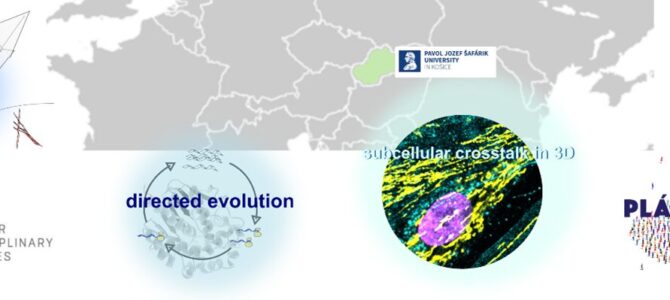
CIB members awarded with Fellowships for excellent researchers R2-R4.
Successful applications from CIB in call 09I03-03-V04 Fellowships for excellent researchers R2-R4
Five project applications were submitted by the members of the Center for Interdisciplinary Biosciences (CIB) in the call 09I03-03-V04 Fellowships for excellent researchers R2-R4 as part of the Recovery and Resilience Plan for Slovakia. Four of them were approved by the scientific committee and three of these excellent projects started to be implemented at CIB in July 2024.
R2 project:
Project code: ID 09I03-03-V04-00116
Exploring the structural properties and therapeutic potential of the Hsp70 chaperone’s substrate-binding domain for the treatment of amyloidosis
Principal investigator: RNDr. Michal Nemergut, PhD.
Amyloidosis is a group of diseases characterized by the improper folding and aggregation of light chain, leading to their deposition in various tissues. This impairs their functionality and results in serious health complications. Despite the severity of amyloidosis, there is currently no effective treatment aimed at suppressing light chain aggregation. In this project, we plan to elucidate the structural properties and therapeutic potential of the substrate-binding domain of the chaperone Hsp70 as a novel strategy to combat amyloidosis. To achieve this, we will employ a combination of molecular biology, biophysics, and structural biology techniques. The added value of the project lies in the establishment of protein crystallography as a new scientific discipline at UPJS, both at the practical and theoretical levels.

R2 project:
Project code: 09I03-03-V04-00112
Rational design of stable and catalytically effective haloalkane dehalogenase DhaA
Principal investigator: RNDr. Ivana Timková, PhD.
Haloalkane dehalogenases (HLDs) are known as microbial enzymes that can degrade synthetic halogenated compounds that are recognized as pollutants. Three archetypal enzymes (DhlA, DhaA, and LinB) have been extensively studied and modified by protein engineering. However, obtaining biotechnology-required qualitative traits of HLDs still represents a significant obstacle for researchers. This project brings original solution for possible enhancement of stability and catalytic activity of a group of haloalkane dehalogenases. The major achievement will be establishment of methodology for effective improvement of HLD by combination of methods of the rational design and protein evolution. To demonstrate efficiency of the proposed approach, well-characterized haloalkane dehalogenase DhaA will be chosen as a HLD representative.

R3 project:
Project code: 09I03-03-V04-00007
Breast cancer organoid on a chip for fluorescence lifetime imaging of autophagy and apoptosis induced by targeted treatment with designed ankyrin repeat protein
Principal investigator: RNDr. Veronika Huntošová, PhD.
Fluorescence lifetime is a unique parameter of a molecule that is very sensitive to the environment. Therefore, fluorescence lifetime imaging allows identification of local changes in cells with high spatial and temporal resolution. Replacing animal models for human disease is a high priority in our research. This project aims to create a breast cancer organoid composed of cells with various expression of human epidermal growth factor receptor 2 to monitor subcellular and cellular interactions during targeted treatment. The organoid thus exhibits a high degree of heterogeneity and bridges the gap between cell cultures and in vivo models of cancer. The innovative approach of a hydrogel scaffold of recombinant spider silk proteins is proposed to grow cells on a chip. The cells on the chip are targeted by a nano-delivery system consisting of metal-based nanoparticles and a designed ankyrin repeat protein. The composition of the nanoparticles enables multimodal bioimaging and treatment.

We believe that this success will continue to motivate all members of CIB to gain new knowledge as part of our excellent research!

